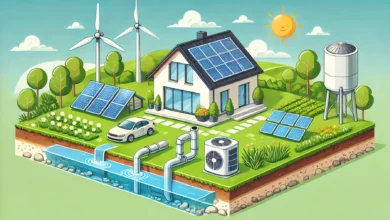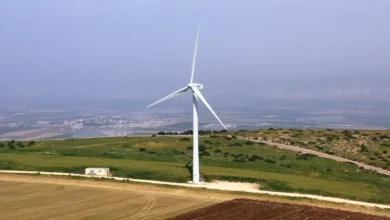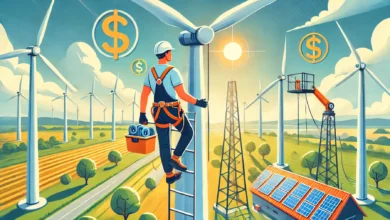Onshore vs Offshore Wind Farms | Comparative Analysis

Wind energy has emerged as one of the most sustainable solutions to meet global energy demands. Among the various methods, wind farms are classified into two categories: onshore wind farms and offshore wind farms. While both contribute significantly to renewable energy production, their applications, benefits, and challenges differ. In this article, we provide an in-depth comparative analysis of onshore vs offshore wind farms, addressing key differences, advantages, and impacts on sustainability.
This analysis also covers topics like onshore versus offshore wind, windkraft onshore, and difference between onshore and offshore wind energy, helping readers make informed decisions about their energy choices.
Contents
- 1 What Are Wind Farms?
- 2 What is an Onshore Wind Farm?
- 3 What is Offshore Wind?
- 4 Key Comparisons: Onshore vs Offshore Wind Energy
- 5 Durability and Maintenance: Offshore Wind vs Onshore Wind
- 6 Sustainability and Renewable Energy Integration
- 7 Future Prospects: Offshore vs Onshore Wind
- 8 Critical Insights and Action Plans
What Are Wind Farms?
Wind farms are clusters of wind turbines that convert wind energy into electricity. They are strategically positioned in areas with consistent wind flow, either onshore (on land) or offshore (in bodies of water). These farms play a vital role in reducing dependence on fossil fuels and promoting clean energy.
Wind Farm Advantages:
- Renewable and eco-friendly energy source.
- Reduces greenhouse gas emissions.
- Minimal operational costs after installation.
- Supports rural and coastal economies through job creation.
- Scalable energy production based on needs.
- Suitable for integration into wind farms onshore or offshore wind turbines vs onshore.
What is an Onshore Wind Farm?

An onshore wind farm refers to a cluster of onshore wind turbines located on land. These turbines harness wind energy in areas such as plains, hills, and agricultural lands.
Key Features:
- Easier and more affordable installation.
- Maintenance is less expensive and accessible.
- Close to energy demand centers, minimizing transmission losses.
Examples of Onshore Wind Projects:
- Gansu Wind Farm, China—the largest onshore wind farm globally.
- Alta Wind Energy Center, USA—a significant onshore wind project.
- Hornsdale Wind Farm, Australia—recognized for its integration of renewable energy storage systems.
What is Offshore Wind?
Offshore wind farms are built in bodies of water, typically oceans or large lakes. These farms harness the stronger and more consistent winds available offshore.
Key Features:
- Higher wind speeds, leading to increased energy output.
- Less visual and noise impact compared to onshore wind turbines.
- Ability to install larger turbines for more energy generation.
Offshore Wind Meaning and Applications:
Offshore wind energy refers to harnessing wind power in marine environments. These are often located in areas far from shorelines, providing access to stronger winds.
Windfarm in Ocean: Offshore wind farms are often described as windfarms in oceans, emphasizing their large-scale, sustainable contributions to energy production.
Key Comparisons: Onshore vs Offshore Wind Energy
Location and Infrastructure
- Onshore Wind Farms: Built on land with simpler infrastructure requirements.
- Offshore Wind Farms: Installed in oceans or seas, requiring specialized construction and underwater cabling.
Cost Breakdown: Onshore vs Offshore Wind Energy

- Installation Costs:
- Onshore wind farms: $1,200–$1,700 per kW.
- Offshore wind farms: $3,000–$5,000 per kW.
- Maintenance Costs:
- Onshore: Lower due to easy accessibility.
- Offshore: Higher due to complex logistics and marine conditions.
- Operational Costs:
- Onshore: Typically $20–$50 per MWh.
- Offshore: Around $80–$150 per MWh.
- Energy Output Efficiency:
- Offshore winds vs onshore: Offshore wind energy benefits from stronger, more consistent winds.

Durability and Maintenance: Offshore Wind vs Onshore Wind
Offshore Wind Turbines vs Onshore
- Offshore wind turbines vs onshore turbines: Offshore turbines are larger, capturing more energy.
- Onshore wind turbines are smaller, designed for land-based operations.
Durability:
- Offshore turbines are built to withstand harsh marine environments but require costly maintenance.
- Onshore turbines are easier to maintain due to accessibility.
Sustainability and Renewable Energy Integration
Both onshore and offshore wind energy contribute to sustainability, but their integration into existing grids varies.
Environmental Impact:
- Difference between onshore and offshore winds highlights varying environmental impacts on ecosystems.
- What are onshore winds? They typically affect land-based ecosystems.
- Offshore winds vs onshore require marine protection measures to safeguard aquatic life.
Future Prospects: Offshore vs Onshore Wind
- Offshore wind onshore wind systems are advancing with innovations in hybrid technology.
- Expansion in wind farms onshore will continue to support rural development.
- Emerging designs for offshore wind turbines vs onshore focus on increased efficiency and cost reduction.
Critical Insights and Action Plans
- Onshore vs Offshore Wind Farms differ in location, costs, energy output, and environmental impact.
- Offshore wind vs onshore wind is more efficient but costlier, while onshore wind farms are cheaper and easier to install.
- Both types support renewable energy goals and sustainability efforts worldwide.
Interested in exploring more about wind farms and renewable energy? Evaluate local onshore wind projects or consider the benefits of offshore wind turbines vs onshore systems for sustainable energy solutions!



